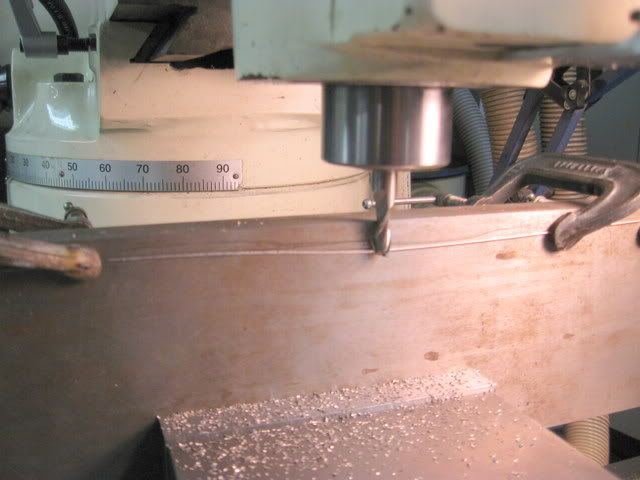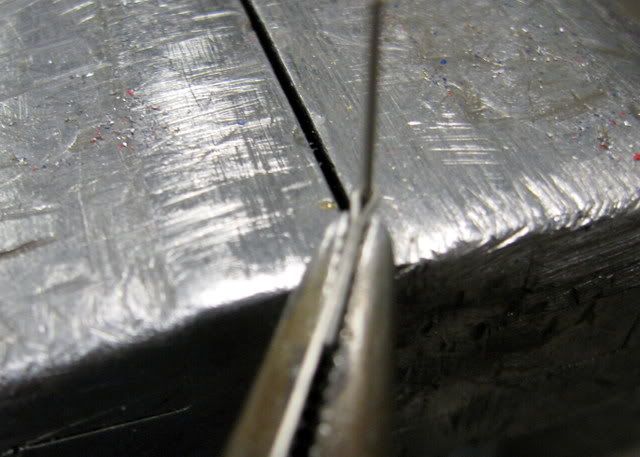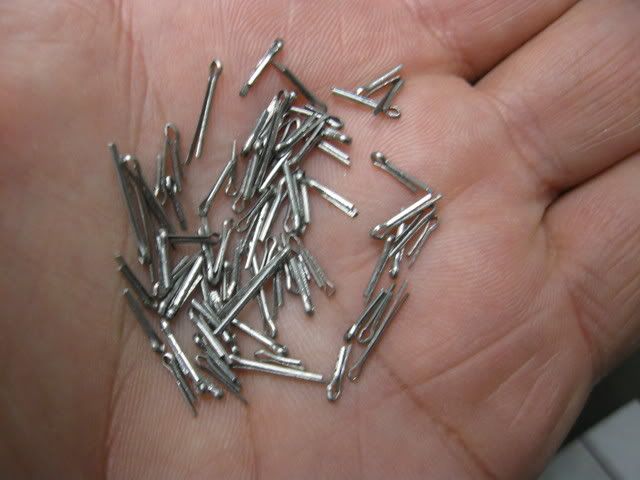Oldmechthings
Well-Known Member
- Joined
- Jan 10, 2008
- Messages
- 153
- Reaction score
- 12
Cotter pins down to about 1/16" are fairly common and are available at most hardware stores, but smaller than that usually requires ordering them from model supply places. Making miniature cotter pins is a fairly simple task and does not take much longer than placing an order, and there is no waiting for them to arrive.
Clamp a piece of ground or cold finished steel in the mill vise, and then with C-clamps clamp a piece of wire to the plate as shown in the picture below. Use a wire of the size of the finished cotters. In this case I'm using a piece of .035"diameter nickel welding wire, although I've used other kinds with good results. It is just that these cotters will not rust.

Mill the wire down to one half it's diameter. It might move around a bit, but the steel will act as a backup. I usually clamp the wire at intervals of 3 or 4 inches to stabilize it a little, and stop and leap grog the clamps past the cutter as I come to them.
After milling the "D" shaped wire, de-burr it by sliding it through a folded piece of abrasive cloth a couple times.
Then using a short piece of the same size wire as the cotter, clamped in a vise, bend the D shaped piece around it and pinch it close to the form wire to shape the eye of the cotter.

After that snip it off and form another one, etc, etc. The length can be adjusted to suit the needs or simply snipped to length when they are used.

Shown here is an assortment of 75 that I made this morning. While it is not quite a hand full, it should keep me supplied for a while.
Birk ;D
Clamp a piece of ground or cold finished steel in the mill vise, and then with C-clamps clamp a piece of wire to the plate as shown in the picture below. Use a wire of the size of the finished cotters. In this case I'm using a piece of .035"diameter nickel welding wire, although I've used other kinds with good results. It is just that these cotters will not rust.

Mill the wire down to one half it's diameter. It might move around a bit, but the steel will act as a backup. I usually clamp the wire at intervals of 3 or 4 inches to stabilize it a little, and stop and leap grog the clamps past the cutter as I come to them.
After milling the "D" shaped wire, de-burr it by sliding it through a folded piece of abrasive cloth a couple times.
Then using a short piece of the same size wire as the cotter, clamped in a vise, bend the D shaped piece around it and pinch it close to the form wire to shape the eye of the cotter.

After that snip it off and form another one, etc, etc. The length can be adjusted to suit the needs or simply snipped to length when they are used.

Shown here is an assortment of 75 that I made this morning. While it is not quite a hand full, it should keep me supplied for a while.
Birk ;D




